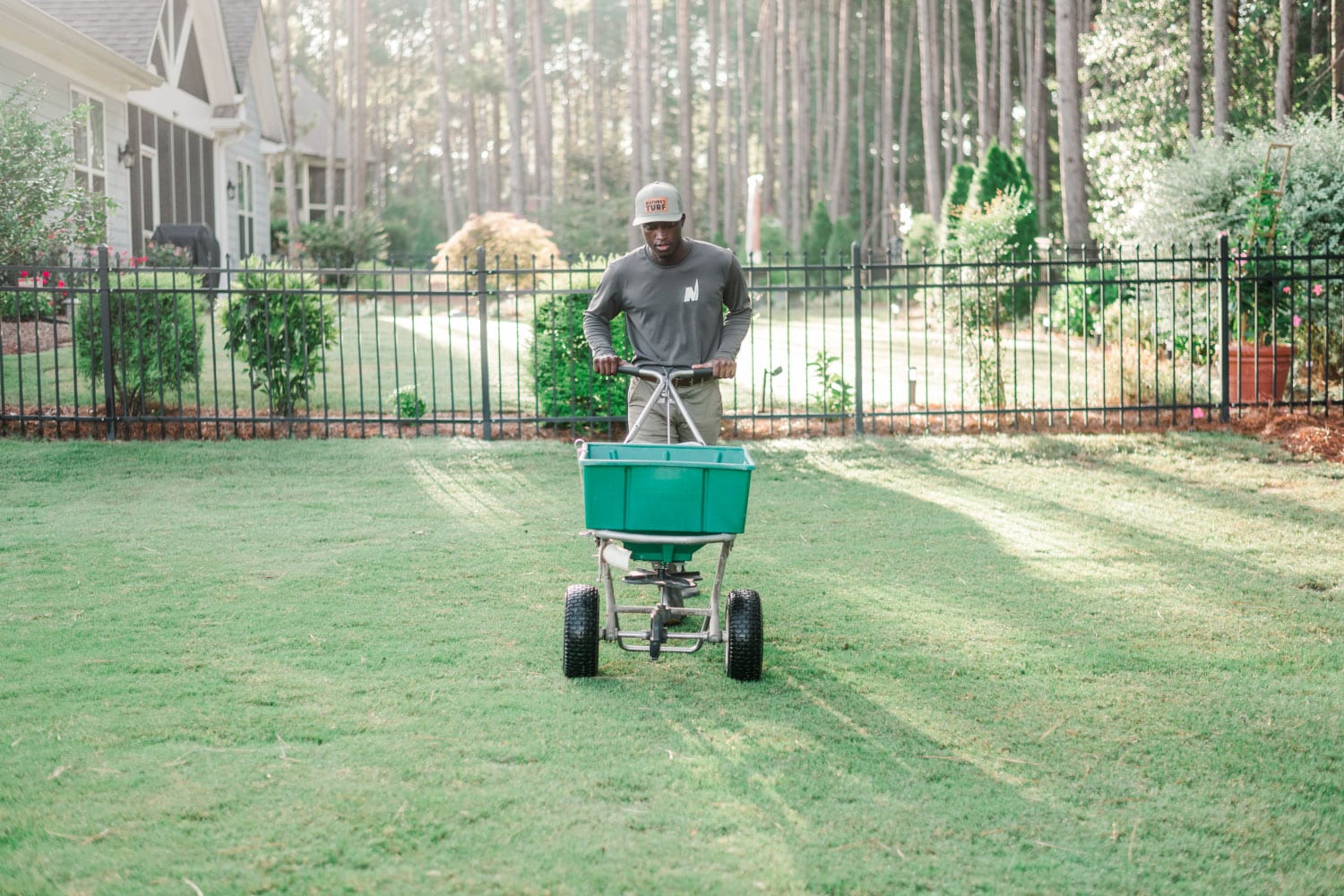In the last few years, Atlanta has experienced an influx of new residents from all over the world. The city boasts some of the best businesses, highest rates of job growth, top-rated colleges, and most desirable neighborhoods for families. One fun fact about the Atlanta area: the town where Nature’s Turf is based is a stone’s throw from Trilith, where major motion pictures are filmed. Newcomers, we are happy to have you! Whether you’ve lived in Atlanta all your life or you are new to the area, you may have questions about the types of grass that are best suited for this beautiful area. Let’s talk about bermuda and zoysia, the two most commonly planted grasses in the Atlanta area.
Why Should I Choose Bermuda (Bermudagrass)?
If your lawn gets 7-8 hours of direct sunlight each day, there are advantages to selecting bermuda for your Atlanta-area lawn. Varieties of bermudagrass, Cynodon dactylon (spp.), make up a large majority of the lawns planted in this area, especially when establishing landscapes around new builds.
Here are the advantages of choosing bermuda (Tif-419 and similar varieties). Bermuda is:
- exceptionally well-suited for the hot summer temps
- relatively drought-tolerant for the inevitable dry spells we experience
- a great value because of its wide utilization and relatively low cost of production
The most important conditions to consider when deciding whether or not to plant bermudagrass are sunlight intensity and duration. The energy requirements of bermuda are very high, meaning they need lots of sunlight to produce energy and sugars. All of the most commonly used varieties of bermuda do their best when receiving 7-8 hours of unrestricted sunlight, not filtered by tree limbs or blocked by a structure such as a home. As light duration dips below the 7-hour mark, bermuda density will become progressively thinner until it is too shaded to sustain growth.
Why Should I Choose Zoysia (Zoysiagrass)?
If your lawn gets less than 7-8 hours of direct sunlight each day, there are advantages to selecting zoysia for your Atlanta-area lawn. Varieties of zoysiagrass, Zoysia japonica or matrella (spp.), have risen to prominence as a partial shade solution in the metro-Atlanta area in the last couple of decades.
Here are the advantages of choosing commercially available varieties of zoysia.
Zoysia is:
- hardy for our summer heat and drought conditions
- tolerant of our winter temperatures.
- easy to grow even with low light conditions
As is true for all plant life, varieties of zoysia do have requirements for sunlight and duration, but those requirements tend to be significantly lower than for bermudagrass. With a requirement of 5-6 unfiltered hours of sunlight, fine textured zoysias are a popular choice for people who desire a beautiful, fine-textured, warm-season turfgrass that can grow in areas where bermuda is less suited. Since zoysiagrasses are less-used and slower to produce, the cost tends to be higher than that of bermudagrass, but when it’s the correct solution, nothing beats it.
What Are the Maintenance Requirements for Bermuda and Zoysia?
The maintenance requirements for bermuda and zoysia are similar. Regular maintenance requirements for both bermuda and zoysia can change based on species and conditions, but here are some good baseline suggestions:
- Mowing should be done weekly during the growing season at a height of 1.5-2 inches. The sub-canopy of bermudagrass is majority stems, meaning having extended periods between cuts increases the potential for scalping (the removal of an excessive quantity of leaf tissue at any one mowing, resulting in a stubbly brown appearance due to exposed stems, stolons, crowns, dead leaves and even bare soil). Zoysias tend to grow more slowly, and if scalped will sustain greater injury.
- Water requirements during the spring and summer are roughly an inch per week of either irrigation or rainwater. This is best delivered on 2-3 non-contiguous days. The goal is deep and infrequent water. This encourages healthy, deep roots. A great deal of a lawn’s ability to withstand stress is tangent on healthy, deep roots.
Why Is My Bermuda or Zoysia Brown in Winter?
If you are used to seeing fescue or bluegrass varieties and you plant bermuda or zoysia for the first time, you may be shocked to see your yard turn brown in the winter. This phenomenon is dormancy, a completely normal occurrence for bermuda and zoysia lawns. Grasses go dormant to avoid conditions when inadequate moisture is available. The most noticeable aspect of dormancy is the brownish-tan color of the leaf blades, which is simply a stress response to freezing temperatures.
Both bermuda and zoysia varieties have rhizomes, which are thick, root-like structures that store energy and grow sideways. As fall days get short and cool, these rhizomes increase the storage of energy in these roots and enter dormancy as we experience a couple of frosts. When spring days get longer and warmer, the rhizomes will create new shoots and leaves for the growing season.
Can I Seed Bermuda and Zoysia?
The short answer: no. The most desirable varieties of both bermuda and zoysia are hybrids that don’t produce viable seed. To establish these species, installing sod is the best and most effective method to establish new turfgrass.
How Do I Pick the Right Kind of Grass?
Choosing the type of grass for a new lawn can be confusing–let the experts help. There are many things to consider when establishing a new landscape or renovating an existing one. Utilizing the knowledge of experts with experience in this area will help ensure that the results you desire are achievable and repeatable.
Whether partnering with an installer, maintenance contractor, or lawn care company (such as Nature’s Turf), it’s important to pick an established and trustworthy partner in each endeavor. If Nature’s Turf can assist in the fertilization and weed control of your bermuda or zoysia lawn, give us a call at 770-461-4156 or email us at info@naturesturf.com.








